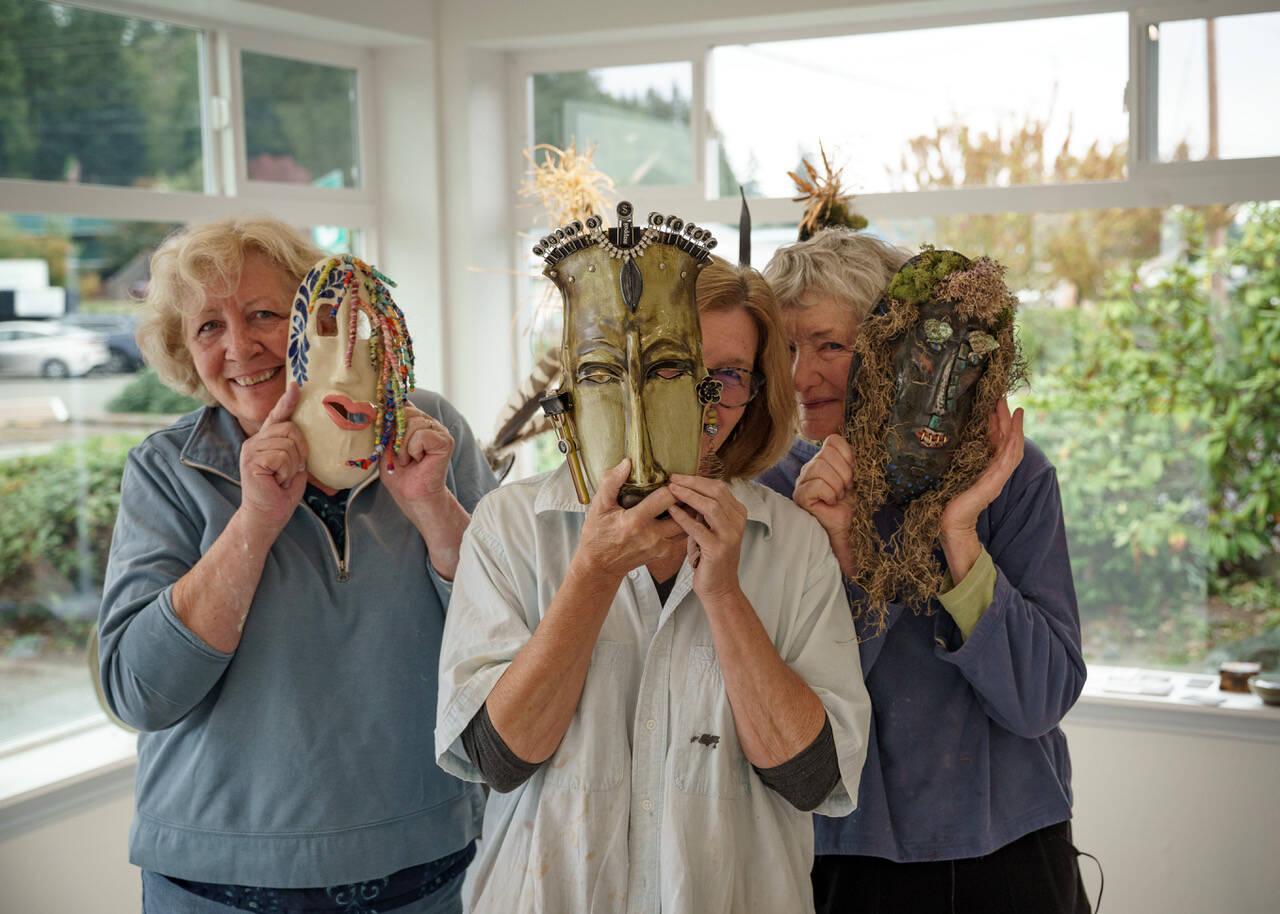October is that time of the year when people have fun disguising as someone else, concealing their identity in the name of some good fun. Often, however, a disguise can silently reveal fascinating things about its creator — may it be a personal interest, a feeling or an experience that has had an impact on their life.
At the Whidbey Clay Center, a community clay studio located in Freeland, the Reveal/Conceal exhibit takes visitors on a tour of whimsical and surreal masks born from the creative minds of the center’s members.
Resident Artist Karen Abel taught a mask workshop and curated the exhibit.
“They’re all so different, and all sort of reflect the maker,” Abel said.
Among the over 20 masks, there is a bittersweet tribute to Tokitae, the southern resident orca who unexpectedly died in August after 50 years in captivity at the Miami Seaquarium. The mask depicts the female orca jumping out of the water, free at last as the artist wanted to imagine her. Another mask tells the story of an artist’s mother who, after retiring, realized her lifelong dream of becoming a professional clown.
Abel said she came up with the idea of a mask exhibit with member artist Jill Lipoti last spring, while Lipoti was working on a mask. They wanted to give members an opportunity to express themselves, breaking away from the usual plates and thinking outside of the box.
Usually, members will create functional objects, like mugs, vases or plates. While these ceramics can be valuable, practicality can only allow limited creativity and experimentation, as Abel found.
“You certainly can’t build mixed media into anything that’s functional,” she said. “It’s just not something that happens in people’s normal practice.”
Working with clay can be a meditative and relaxing activity, but the Reveal/Conceal experience put the artists’ creativity and problem solving skills to the test as they ideated and created masks with different sorts of unconventional materials — like hardware, flowers, office supplies and other things sourced from a backyard or junk-filled drawers.
Each mask is unique and requires some time to be fully appreciated as the viewer notices more details. A feature that particularly stands out is the “hair,” which some artists created with beads, moss, copper wires, dried kelp and even snail shells.
The creative process, according to Abel, took about a month and involved a lot of collaborative thinking between the artists, as Abel and Lipoti had envisioned a community-building project. The artists’ ages range from young adult to retired, and despite the fact they all have different levels of experience, they all are familiar with the basics of pottery.
The exhibit runs from 10 a.m. to 5 p.m. Thursdays through Mondays until Oct. 31, and offers some masks for sale. For more information about the Whidbey Clay Center, visit whidbeyclaycenter.com.



